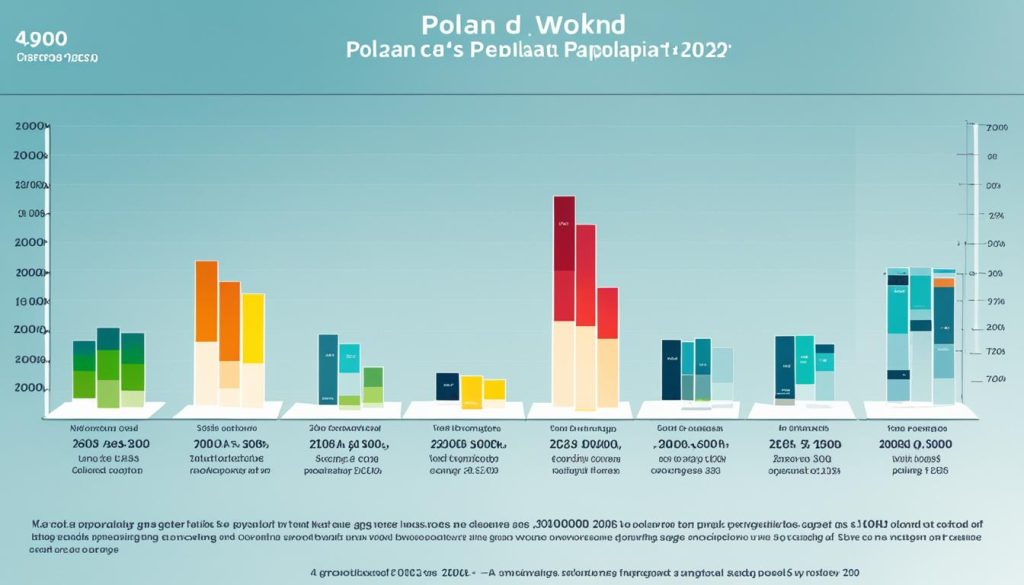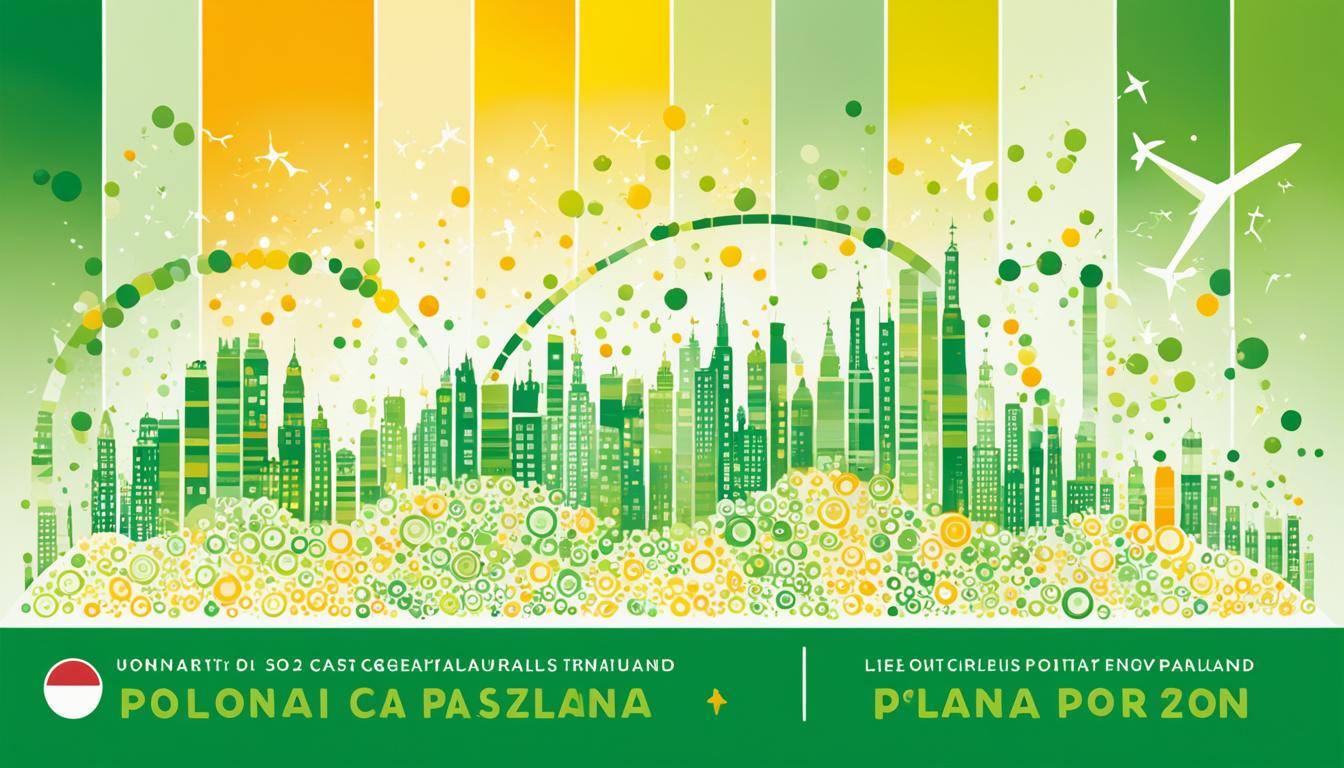Grasping demographic trends in Poland is key for understanding its social and economic changes in 2023. The current statistical population analysis shows shifts that are important for Poland’s future. It looks into population growth rates, ageing issues, migration, and changing family structures in Poland.
Analyzing the age structure highlights changes affecting policies and markets. With fertility rate trends fluctuating, Poland’s demographic scene is changing in both predictable and unexpected ways. These findings are vital for those steering through the demographic changes in this Central European country.
Key Takeaways
- Poland’s dynamic demographic landscape denotes significant shifts in population growth rates.
- Statistical population analysis 2023 pinpoints the emerging age trends and fertility patterns.
- Changes in age structure pose potential implications for the country’s future economic and social strategies.
- Fertility rate variations contribute uniquely to the modifications in demographic compositions.
- An understanding of population dynamics is essential for long-term planning and policy development.
Demographic Evolution and Current Statistics
Poland’s population changes have shown different trends, as seen in the Poland census data 2023. This data highlights the country’s age and gender variations. These insights shed light on how society and the economy are woven together.
The latest population data shows Poland going through interesting changes. These changes place Poland in a special spot among European countries. This story adds to the broader European demographic story.
According to the Central Statistical Office of Poland, the ageing population is more noticeable. The median age is rising, pointing to big impacts on the economy and welfare in the future.
The changing age distribution highlights the need for updated social services. An evolving gender ratio helps shape policies on health, education, and jobs. This is vital for matching services with population needs.

The discussion on lifespan trends adds more layers to the Poland demographic evolution conversation. While healthcare improvements have increased life expectancy, they also add to the ageing population challenge. These population data bits pave the way for deeper looks into how society might adjust in future years.
| Age Group | Population Percentage | Median Age | Gender Ratio (Males per 100 Females) |
|---|---|---|---|
| 0-14 | 14.5% | N/A | 105 |
| 15-64 | 68.2% | 40.5 | 99 |
| 65+ | 17.3% | 77.2 | 69 |
The data reveals crucial elements of Poland’s demographic past. It also encourages deeper exploration into differences across regions. Grasping these differences aids in creating focused plans. So, dissecting the Poland census data 2023 is key for those planning Poland’s future.
Impact of Migration on Poland Population
Poland’s population is changing because more people are moving in and out of the country. This has caused big changes in numbers and types of people living there. Migrants coming and going offer a look at how Poland’s society and economy are shaped.
Influx of International Migrants
Many people from other countries have come to Poland. They help fill job gaps and add to Poland’s culture. Data from Eurostat shows the impact of these migrants on jobs, schools, and health.
These new arrivals boost the economy but also create challenges. Housing, social services, and blending cultures are big tasks.
Emigration Patterns and Their Long-Term Effects
At the same time, many Poles have moved to other countries. This spreads Polish culture but worries about an aging population. The debate is about if Poland can keep up with these trends without problems.
Changing Demographics Due to Migration
Poland’s population is both growing and changing because of migration. This includes the work force and cultural mix. These shifts offer new directions for Poland’s economy and society.
It’s important to understand these trends. This way, Poland can make policies that deal with migration well and make the most of new skills and diversity.
Conclusion
This demographic analysis offers a summary of trends in Poland’s population. It looks at changes in age, fertility rates, and life expectancy. These changes stem from both internal dynamics and external migration.
Moving people into and out of Poland affects its economy, culture, and society. Emigration shows Poland’s global ties and the vibrancy of its people. Understanding migration is key for planning Poland’s future.
Experts are watching urbanisation, technology, and global changes. Strategies are being developed to tackle challenges and use opportunities. Poland’s society is evolving, showing both change and continuity. The story of Poland’s people is still unfolding.
FAQ
What are the latest demographic trends in Poland?
In 2023, Poland sees changes in population growth, age shifts, and fertility rates’ differences. The stats show demographic moves that shape its society and economy.
Where can one find accurate and up-to-date population data for Poland?
Get reliable, fresh population data for Poland from the Central Statistical Office. They conduct censuses and share stats on age and gender.
How is migration affecting Poland’s population?
Migration profoundly influences Poland’s demography. Newcomers and emigration patterns change its cultural dynamics and work force. They also shape Poland’s future demographics.
What is the median age and life expectancy of Poland’s population in 2023?
As of 2023, median age and life expectancy in Poland are updated. Graphs display these updates, showing changes over years.
Can you explain Poland’s population growth rates and fertility rate trends?
Poland’s population growth links to its fertility rate. This rate affects population changes, and migration affects the total growth. Analyses in 2023 offer insights into these patterns.
What long-term effects does emigration have on Poland’s demographics?
Emigration may reduce Poland’s working-age group, change age structures, and create labour market gaps. It might also change cultural aspects and population spread.
How does the age structure of Poland’s population influence its demographic landscape?
Poland’s age structure affects its demographic scene. It dictates social policies, healthcare needs, and work force composition. An older population needs more elder care, while a younger one could boost the economy.
Are there any predictions for future population trends in Poland?
Experts predict Poland’s future demographic trends. They use current data on ageing, fertility, and migration to forecast socio-economic impacts.



